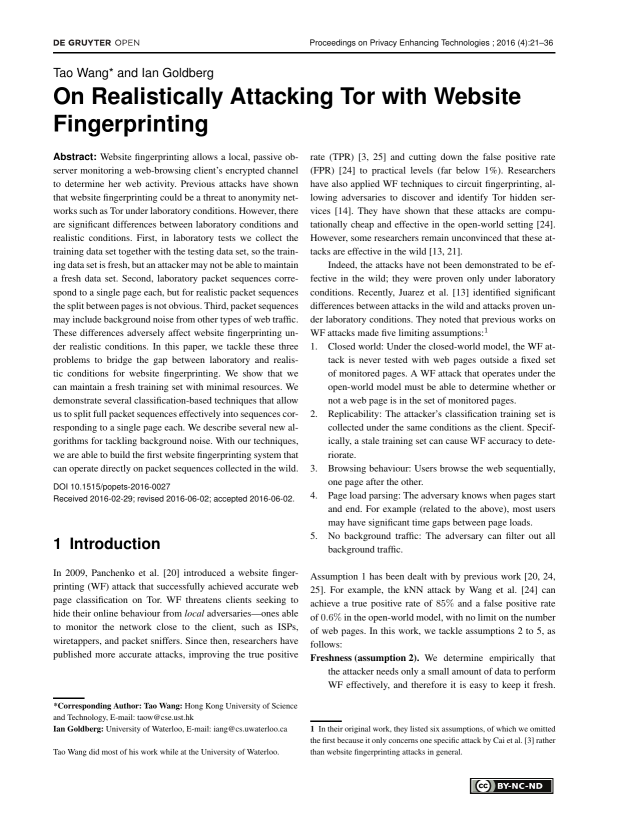On Realistically Attacking Tor with Website Fingerprinting
Authors: Tao Wang (Hong Kong University of Science and Technology), Ian Goldberg (University of Waterloo)
Volume: 2016
Issue: 4
Pages: 21–36
DOI: https://doi.org/10.1515/popets-2016-0027
Abstract: Website fingerprinting allows a local, passive observer monitoring a web-browsing client’s encrypted channel to determine her web activity. Previous attacks have shown that website fingerprinting could be a threat to anonymity networks such as Tor under laboratory conditions. However, there are significant differences between laboratory conditions and realistic conditions. First, in laboratory tests we collect the training data set together with the testing data set, so the training data set is fresh, but an attacker may not be able to maintain a fresh data set. Second, laboratory packet sequences correspond to a single page each, but for realistic packet sequences the split between pages is not obvious. Third, packet sequences may include background noise from other types of web traffic. These differences adversely affect website fingerprinting under realistic conditions. In this paper, we tackle these three problems to bridge the gap between laboratory and realistic conditions for website fingerprinting. We show that we can maintain a fresh training set with minimal resources. We demonstrate several classification-based techniques that allow us to split full packet sequences effectively into sequences corresponding to a single page each. We describe several new algorithms for tackling background noise. With our techniques, we are able to build the first website fingerprinting system that can operate directly on packet sequences collected in the wild.
Copyright in PoPETs articles are held by their authors. This article is published under a Creative Commons Attribution-NonCommercial-NoDerivs 3.0 license.

